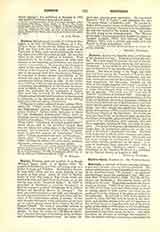

Espousals, a contract of future marriage between a man and a woman, who are thereby affianced. The ecclesiastical law governing this contract was amended by the pontifical decree “Ne Temere”, on espousals and marriages, which was published August 2, 1907, and took effect April 19 (Easter), 1908. For the old legislation see Betrothal; the present article will be confined to the new. Regarding espousals the decree enacts as follows: “Only those espousals are held to be valid and to beget canonical effects which are made in writing, signed by both parties, and either by the parish priest or the ordinary of the place, or at least by two witnesses. In case one or both of the parties be unable to write, this fact is to be noted in the document, and another witness is to add his signature to the contract as above, together with that of the parish priest or the ordinary of the place, or the two witnesses. Until Easter of 1908, there was no written document prescribed for espousals, except for Spain. Like other contracts, the promise of marriage was supposed to bind the parties making it according to prevailing law or custom. That caused many difficulties which necessitated this law. Private, clandestine espousals are henceforth of no value in the eyes of the Church. In the United States engagements were, as a rule, not considered effective enough to entail the impediment of public honesty which, unless the engagement were properly revoked, would render null and void the marriage of either affianced party with a blood-relation in the first degree of the other affianced party, and make sinful marriage with any other person not so related, unless the engagement had been rightly broken. These are the canonical effects which are not begotten unless the espousals are made in writing, whether by filling out a blank formula or by writing the document entirely.
As to the obligation of contracting espousals in writing, it is to be noted that the law does not concern itself with the promise of marriage as a matter of conscience; only with establishing the fact that espousals have no legal value and will not be considered in case of contention by ecclesiastical courts, unless they are in writing. Hence, in foro interno the Church leaves the matter to the confessor. The law suggests no particular formula for the contract of espousals. It must, however, express the promise of future marriage. There must be no condition attached contrary to the nature or laws of Christian marriage. No time is assigned by the law within which the promise must be fulfilled; still the time should be reasonable and accord with the common teaching of competent authorities. The document must be signed by both parties—man and woman—promising to marry each other on or within some definite date. If either or both are unable to write their names, that must be noted in the document. They must, of course, affix their signatures somehow, which must be attested by a special witness. In addition, either the parish priest or ordinary must sign it; both need not sign it; the signature of one only is required. By ordinary is meant the bishop of the diocese where the parties happen to be, or his vicar-general, or any one exercising episcopal jurisdiction, as for instance, the administrator when the see is vacant. By parish priest, as used in the present decree, is to be understood not only the priest who legitimately presides over a parish that is canonically erected, but also, in localities where parishes are not canonically erected, the priest to whom the care of souls has been legitimately entrusted in any specified district, and who is equivalent to a parish priest; and also, in missions where the territory has not yet been perfectly divided, every priest generally deputed for the care of souls in any station by the superior of the mission. The ordinary or parish priest cannot depute any other priest to sign in their stead (Reply of S. Congregation of Council, March 30, 1908). If the signature of the ordinary or of the parish priest cannot be obtained, then at least two witnesses must sign. Their signatures are not needed if either of the foregoing have signed. The witnesses should of course be competent, though they differ in age and sex. The local ecclesiastical authorities are to decide where the document is to be deposited. The new law does not provide for the annulment of espousals. The reasons that formerly sufficed to annul them still remain. If espousals were made as prescribed by the new law, their binding force continues until they shall have been dissolved by proof of either or both parties claiming their dissolution.
JOSEPH SELINGER

